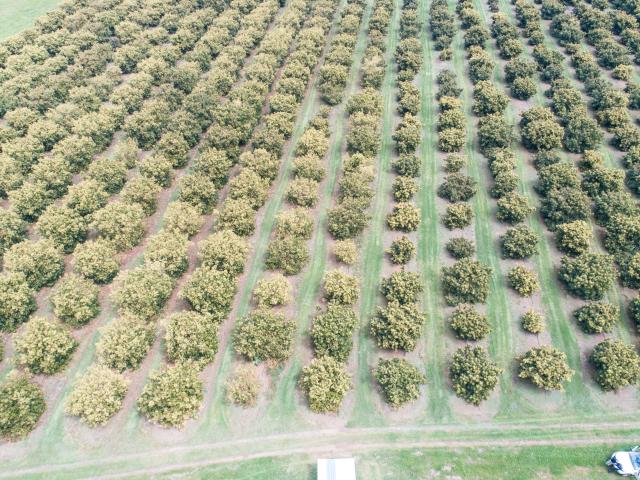Six-spotted mite project on avocados may have relevance for vineyards
A research project on six-spotted mite in south west avocado orchards has just concluded after over two years of research. The aim of the project was to improve management of the mite, with an emphasis on assessing the role of mass reared commercially available predatory mites on the pest. There may be some lessons from this project relevant to protecting vineyards from this same pest.
Surprisingly, we may not even be dealing with the pest we thought we had. Taxonomists have determined that the mite which is a pest in Australian avocado orchards is more likely a species native to Queensland. The taxonomists are planning more work to look at this aspect.
Unlike deciduous grapevines, the pest status of this mite in avocado orchards is primarily related to the possibility of leaf loss in spring, when exposed fruit may suffer sunburn and be unmarketable as first grade fruit. This is most likely to occur if the mite is reasonably abundant in autumn with few predatory mites present. With this scenario and the ability of the mite to continue breeding through winter, its numbers can explode with the higher temperatures in spring.
With this background in mind, the key findings of the avocado project were:
- Monitoring for the pest mite in autumn is critical in preventing spring outbreaks that could result in leaf loss
- None of the three species of commercially available predatory mites that were released in test plots were later retrieved, indicating that they did not establish in the orchards and played no role in assisting with management of the pest
- The existing predatory mite that occurs in avocado orchards, Euseius elinae, was the main predator species but it cannot be relied upon to prevent outbreaks of the pest mite
- A breeding population of a second species of predatory mite was identified - Amblydromalus lailae. This ‘new’ species of potential biocontrol agent is available commercially but more work is required to assess its usefulness in controlling the pest mite in avocado orchards before it can be recommended for release
- Three miticides are available for protecting avocados from the pest mite and remain the most important management tool.
More investigation in avocado orchards is required to develop a comprehensive management plan.

The main contrast between vineyards and avocados, and the biggest conundrum in vineyards, is the overwintering of the mite in the absence of leaves. The host range for the mite is quite narrow – confined primarily to the food crops avocados, vineyards and citrus. The mite has not been observed to feed on plants that occur on the vineyard floor. It is assumed the pest mite overwinters on the vine in protected areas such as under the fibrous bark.
The implications of the findings of the avocado project for vineyards are:
- Where the mite is a pest, to reduce the carryover for the next season, the best timing of miticide application may be just after vintage
- If further studies show that A. lailae is a useful biological control agent in avocado orchards, vignerons could consider introducing this species.
Further detail on this pest mite is available on the DPIRD webpage Six-spotted mite - a pest of avocados and grapevines.
For more information, contact Stewart Learmonth or Alison Mathews.
